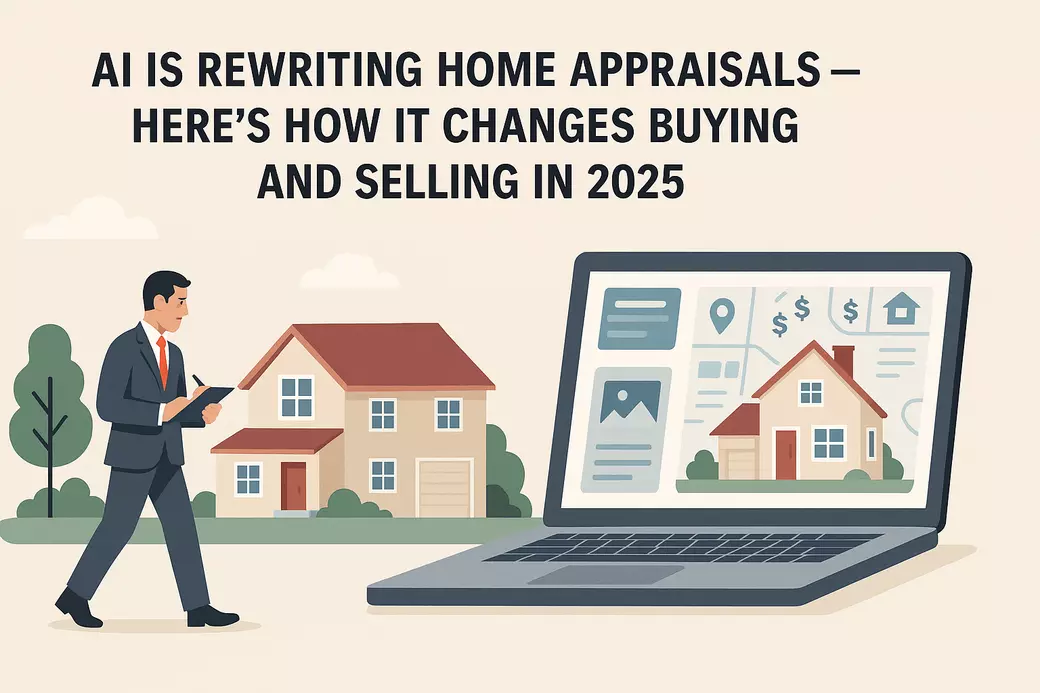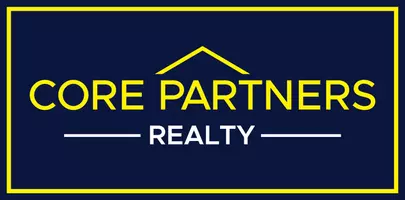Blog > Is AI Taking Over Home Appraisals?
If you’re considering buying or selling a home in Pennsylvania in 2025 or 2026, brace yourself: The appraisal world is changing and that could have implications for you.
In the past, an appraisal involved a licensed appraiser walking around the house and checking comps of nearby homes. He would then tell you what your place is worth. But this year (and continuing through next year), new rules and tech are speeding the process along by doing it digitally, quickly or occasionally even without visiting the home in person. Allow me to explain what it is, what’s going on, and what it means for both buyers and sellers.
First, there is something called an appraisal waiver (also referred to as Value Acceptance for Fannie Mae or ACE for Freddie Mac). If the data on your home is good enough, you may not need to have a human inspect your home at all. Instead, the lender or appraiser relies on digital information — past sales, property records, taxes and more — to determine a value. In the beginning of 2025, those rules became more relaxed, meaning a larger group of Pennsylvania borrowers can qualify for these waivers. The LTV (loan to value) limit for waivers is increasing from 80% to 90%, for example. In some situations, waivers of up to 97% with extra inspection steps have even been mentioned. Read More Here
But it’s not all going to be digital. These waiver decisions are largely based on what reliable data is available. If the system is looking at a home in a place where many comparable sales exist, well there’s stronger “evidence” for it to trust. If your home is special — a custom design or filled with unusual upgrades, or cursed with hidden issues those sales records don’t reflect — it won’t be shown in the data. Online programs don’t see behind walls, notice if the roof leaks or are aware of a basement water problem. That’s where the other methods come in.
A hybrid appraisal (or bifurcated appraisal) is one such combined approach. This is where someone comes to your house (not necessarily an actual appraiser) to gather information: photos, measurements and notes about condition. A licensed appraiser then takes all that information and finishes the valuation from his desk. You reap a fair share of the benefits of a full appraisal, but with less travel and time involved. Read More Here
There is also such a thing as a desktop appraisal. No one has to visit your home at all in a desktop appraisal. The appraiser relies exclusively on data that’s available online: listing photos, tax records, maps, sale prices of nearby homes. If there is enough data, then you can do this. But if the home is unusual or there’s not enough supporting data, the lender probably will demand that someone do an in-person visit.
Another major change is new guidance for how appraisers report and adjust values. A new version of the Uniform Appraisal Dataset (UAD 3.6) is being rolled out, which will begin in 2025. Some additional data fields will be required; measurements — and therefore quality control—will become more detailed; and appraisers will need to explain their time adjustments (how much a property’s value changes over time) with greater precision. This will add more information to the report, leading to increased accuracy for the valuation. All lenders who sell loans to Fannie Mae and Freddie Mac are required to start phasing in the new process in 2026, with full implementation due by November. Read More Here
So how does this all affect you, as a buyer or seller in Pennsylvania?
If you’re a buyer, perhaps you may experience speedier closings and reduced upfront fees. If the lender approves an appraisal waiver, you bypass the $500 to $700 fee for a standard appraisal, and you don’t have to wait for someone to come out to your house. But you should continue to protect yourself and order a home inspection. Just because the appraisal is being waived doesn’t mean there are no risks. Whenever an appraisal is going on, ask your lender what kind of appraisal will be used (waiver? hybrid? desktop?) and don’t hesitate to ask for a complete appraisal if things don’t seem quite right. Be sure to tell your agent to compare recent sales in your neighborhood so you have a sense of whether the price is realistic.
If you’re a seller, deals will potentially close with fewer bumps. There will be less danger of a buyer removing herself from the deal because the appraisal didn’t match the sale price. But your job is to make sure your home looks “good” in the data world. Be sure to do your research and price your home sensibly when you put it on the market. Keep records of each upgrade, each renovation, and every permit. Be prepared for a home visit in a hybrid environment or at least keep excellent records for the desktop appraisals. The more information you can provide, the better the valuation system can capture your home’s true value.
For lenders, the shift helps accelerate underwriting. You should see fewer of those last-minute surprises from human appraisals and fewer buyers backing away from deals when appraisals don’t meet expectations. There are human-built features to protect you: if your data set is thin or questionable, your system will trigger the need for a full appraisal so at least you’re not entirely at the mercy of a digital valuation.
In general, the landscape of appraisals is changing in PA over the next year. A lot of transactions will bypass the traditional process and lean more on data available online or use a hybrid/desk-top approach. That’s good in many ways — cheaper, faster, more efficient — but it also makes it important to keep an eye on the market and ask questions. If you’re a buyer or seller, the solution is to have an early conversation with your lender and agent to determine which appraisal approach is being used and whether strong data on your home exists to reach a fair and accurate valuation.
As a Realtor with a network of lenders who also stay in touch with the changes, I can help you navigate the appraisal process, whether you’re a buyer or a seller. Let’s get started!

